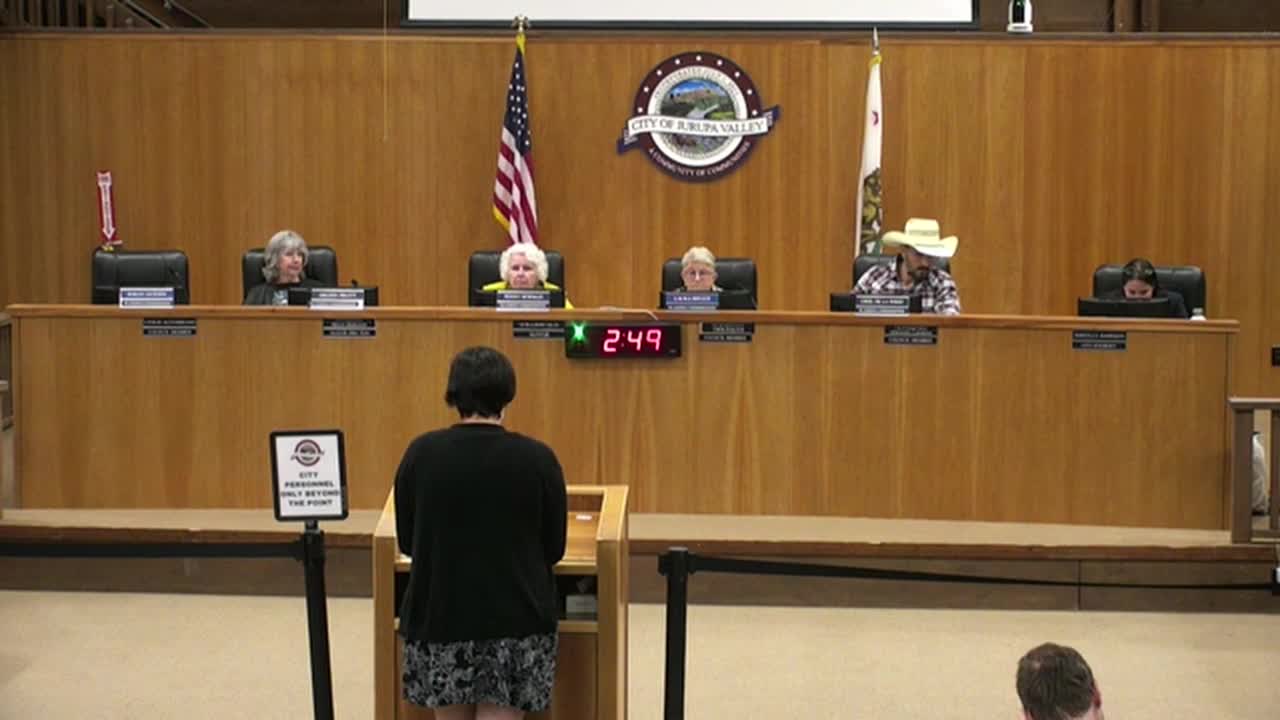Indigenous tribe fights to protect sacred oak tree
June 26, 2024 | Jurupa Valley, Riverside County, California

This article was created by AI summarizing key points discussed. AI makes mistakes, so for full details and context, please refer to the video of the full meeting. Please report any errors so we can fix them. Report an error »

In a recent government meeting, significant concerns were raised regarding a proposed development project that threatens local oak trees and the surrounding ecosystem. Environmental advocates highlighted that existing research fails to adequately demonstrate the project's safety for the oak tree, as it does not consider the impact on the surrounding vegetation and endangered species that rely on the tree for survival. Critics argue that the proposed buffer zone of 360 feet is insufficient and that the lack of peer-reviewed studies raises questions about the validity of the findings presented.
Kara Grant, representing the Gabriela and O'Bannon Mission Indians, emphasized the importance of proper consultation with indigenous tribes regarding the project. She clarified that previous public comments attributed to a purported Native American representative were not affiliated with the Keese Nation, the tribe with territorial claims in the area. Grant noted that the Keese Nation had engaged in extensive discussions with the city and the project developers, resulting in a preliminary agreement for the tribe to act as stewards of the open space through a conservation easement.
Despite progress in negotiations, Grant expressed concerns about specific language in the mitigation measures that could undermine the protection of cultural resources. She urged the removal of clauses that would allow the project to proceed without implementing necessary mitigation if an agreement with consulting tribes could not be reached.
The meeting underscored the ongoing tensions between development interests and environmental and cultural preservation, with advocates warning that moving forward without addressing these concerns could lead to legal challenges and further complications.
Kara Grant, representing the Gabriela and O'Bannon Mission Indians, emphasized the importance of proper consultation with indigenous tribes regarding the project. She clarified that previous public comments attributed to a purported Native American representative were not affiliated with the Keese Nation, the tribe with territorial claims in the area. Grant noted that the Keese Nation had engaged in extensive discussions with the city and the project developers, resulting in a preliminary agreement for the tribe to act as stewards of the open space through a conservation easement.
Despite progress in negotiations, Grant expressed concerns about specific language in the mitigation measures that could undermine the protection of cultural resources. She urged the removal of clauses that would allow the project to proceed without implementing necessary mitigation if an agreement with consulting tribes could not be reached.
The meeting underscored the ongoing tensions between development interests and environmental and cultural preservation, with advocates warning that moving forward without addressing these concerns could lead to legal challenges and further complications.
View full meeting
This article is based on a recent meeting—watch the full video and explore the complete transcript for deeper insights into the discussion.
View full meeting
